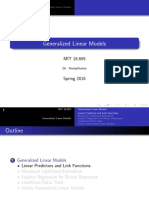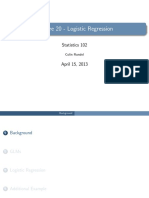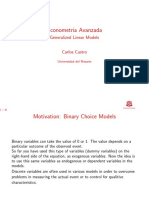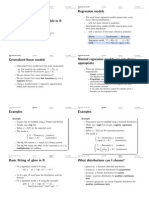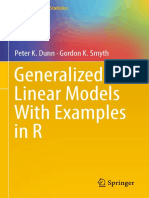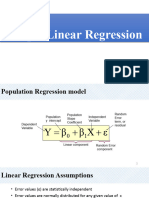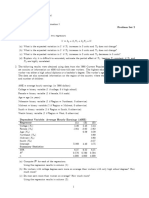0% found this document useful (0 votes)
89 views24 pagesCh13slides Generalized Linear Models
1) The document discusses generalized linear models (GLMs), which extend linear regression by allowing the response variable to have a general distribution from the exponential family and linking the mean response to predictors through link functions.
2) Logistic regression is presented as a specific GLM where the response has a Bernoulli distribution and the logit link function is used. This models the probability of an event as a function of predictors.
3) Parameter estimation in GLMs is typically done by maximum likelihood, fitting the model parameters to maximize the likelihood of observing the sample data.
Uploaded by
Reetika ChoudhuryCopyright
© © All Rights Reserved
We take content rights seriously. If you suspect this is your content, claim it here.
Available Formats
Download as PDF, TXT or read online on Scribd
0% found this document useful (0 votes)
89 views24 pagesCh13slides Generalized Linear Models
1) The document discusses generalized linear models (GLMs), which extend linear regression by allowing the response variable to have a general distribution from the exponential family and linking the mean response to predictors through link functions.
2) Logistic regression is presented as a specific GLM where the response has a Bernoulli distribution and the logit link function is used. This models the probability of an event as a function of predictors.
3) Parameter estimation in GLMs is typically done by maximum likelihood, fitting the model parameters to maximize the likelihood of observing the sample data.
Uploaded by
Reetika ChoudhuryCopyright
© © All Rights Reserved
We take content rights seriously. If you suspect this is your content, claim it here.
Available Formats
Download as PDF, TXT or read online on Scribd
/ 24

































